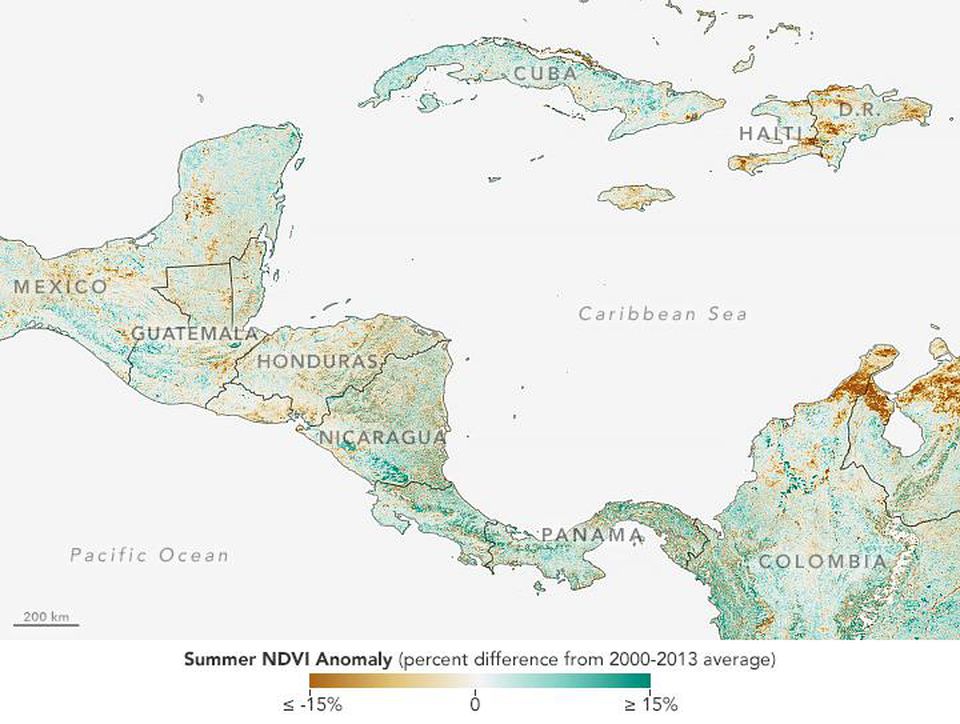Climate Change's Effects on Migration in Central America
The brown regions in Guatemala, Honduras, and El Salvador indicate lowered crop conditions in those areas.
Immigration is one of the most controversial and highly debated issues in the US today. However, one factor that can be easily overlooked is the role that climate change has played in driving migration in Central America.
Although it may not be apparent to the typical consumer, climate change has already been affecting the everyday foods grown within the United States. For example, the changing climate has allowed invasive fruit flies to thrive, hurting the production of cherries and raspberries from New York to Michigan. Meanwhile, reduced rainfall has put rice crops in Arkansas at risk. Up in Canada, even maple syrup production has been affected by warming temperatures. In Central America, people have been among the hardest hit by droughts linked to climate change.
Average temperatures have increased by 0.5 degrees C, and there have been extended droughts in the Honduras, Guatemala and El Salvador, an area referred to as the “Dry Corridor,” leaving an estimated 3.5 million people in need of humanitarian assistance, and the increase in droughts can only be partially attributed to internal climate variability, specifically El Niño.
According to a 2017 study by the Word Food Programme entitled “Food Security and Emigration: Why people flee and the impact on family members left behind in El Salvador, Guatemala, and Honduras,” as many as 47% of families in the Dry Corridor are facing food insecurity. In addition, 72% have been forced to begin selling the farming equipment and resources (such as land and animals) on which they depend to earn a living just to survive in the short run, leaving individuals increasingly vulnerable to future natural disasters and other unforeseen problems. These ill effects of drought are not showing signs of improvement: last year, Guatemala’s bean and corn harvests, which represent the nation’s primary food supply, were the lowest they have been since 2015.
Climate, crop yields, and forced migration are closely linked. Robert Albro of American University explains: “The focus on violence is eclipsing the big picture – which is that people are saying they are moving because of some version of food insecurity...The main reason people are moving is because they don’t have anything to eat. This has a strong link to climate change – we are seeing tremendous climate instability that is radically changing food security in the region.” A wide range of factors are contributing to changing migration patterns, but it is clear that climate change is a significant player, further highlighting the urgency of inspecting the issue from a human rights standpoint.
Image Source: Forbes

